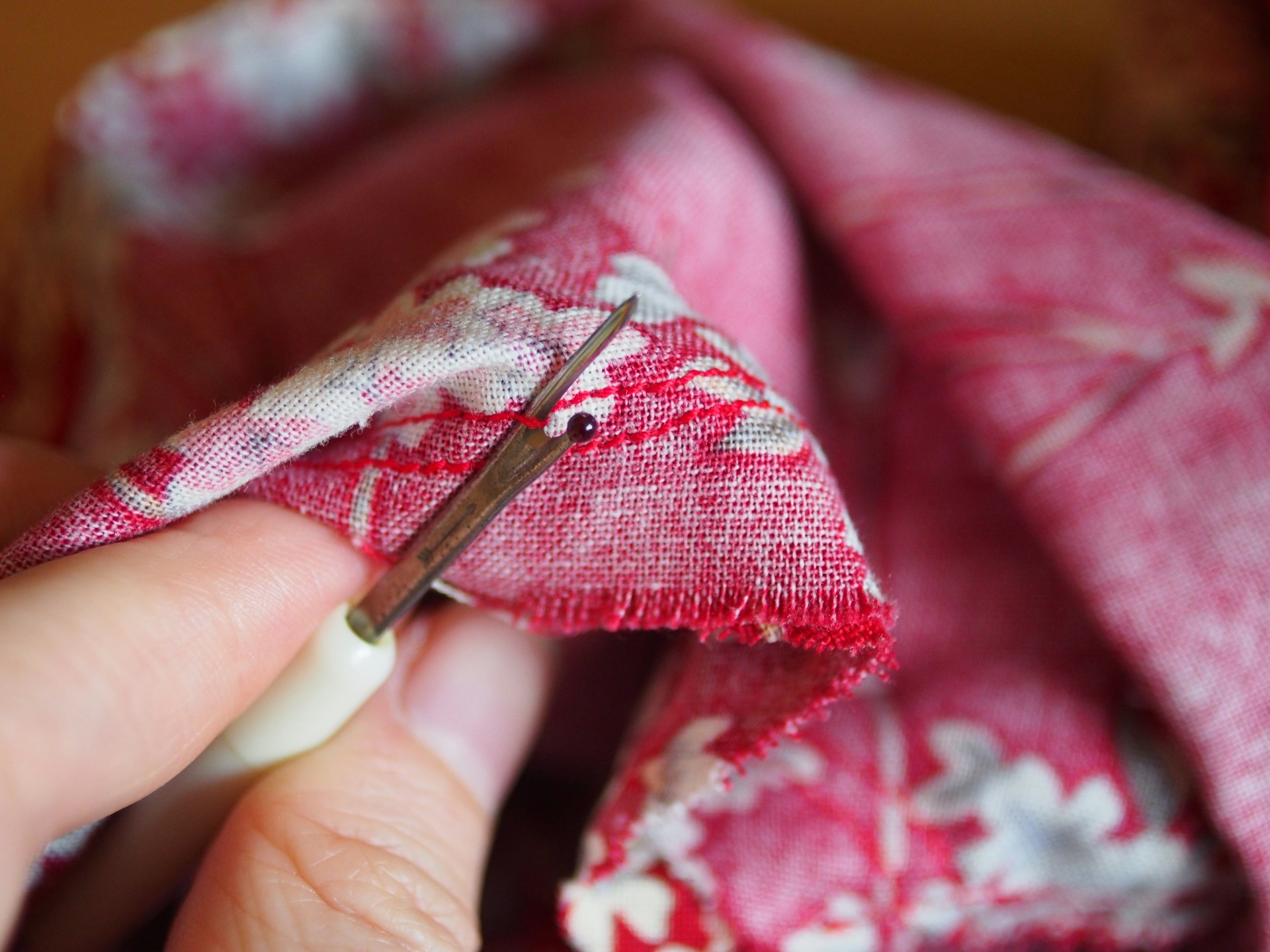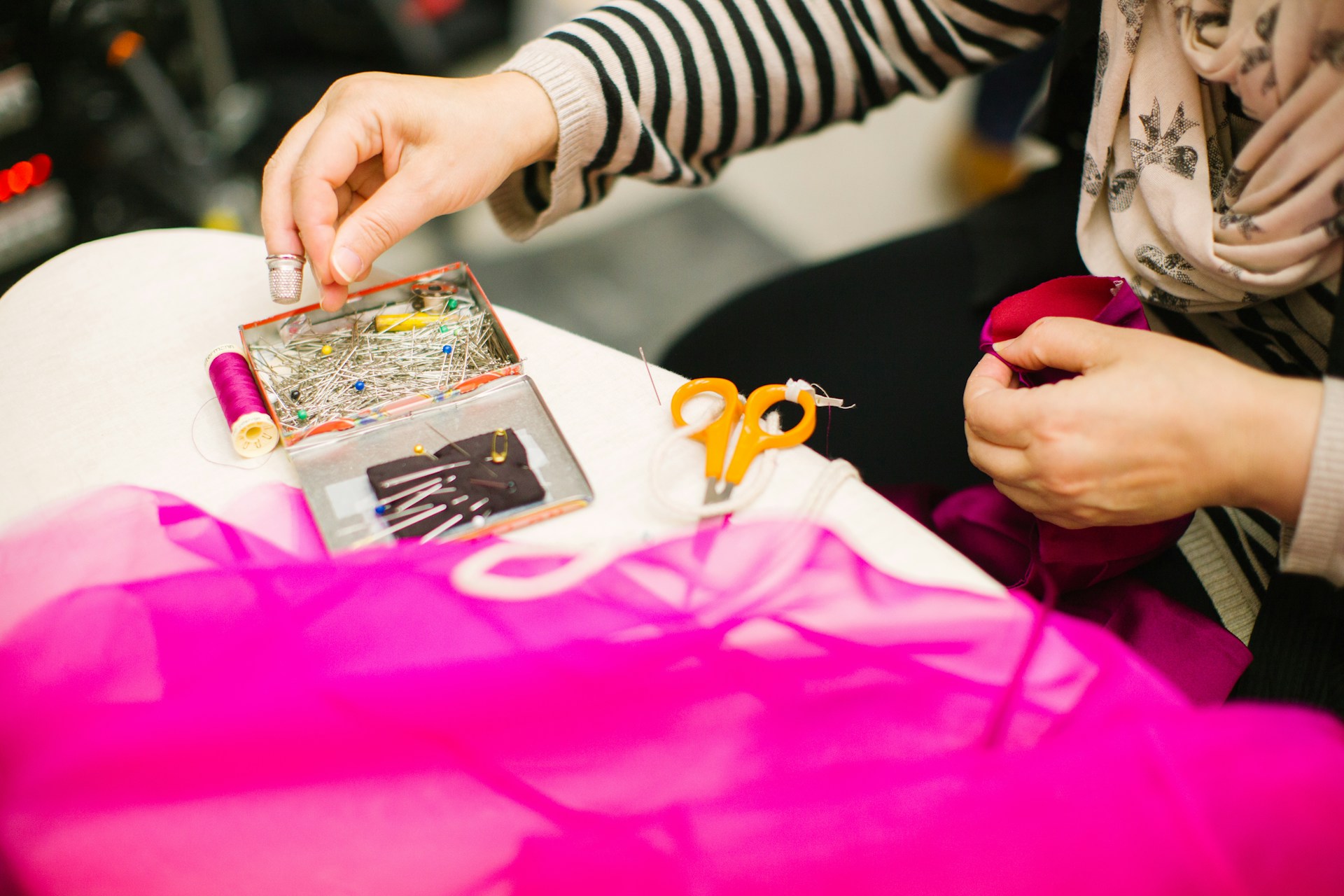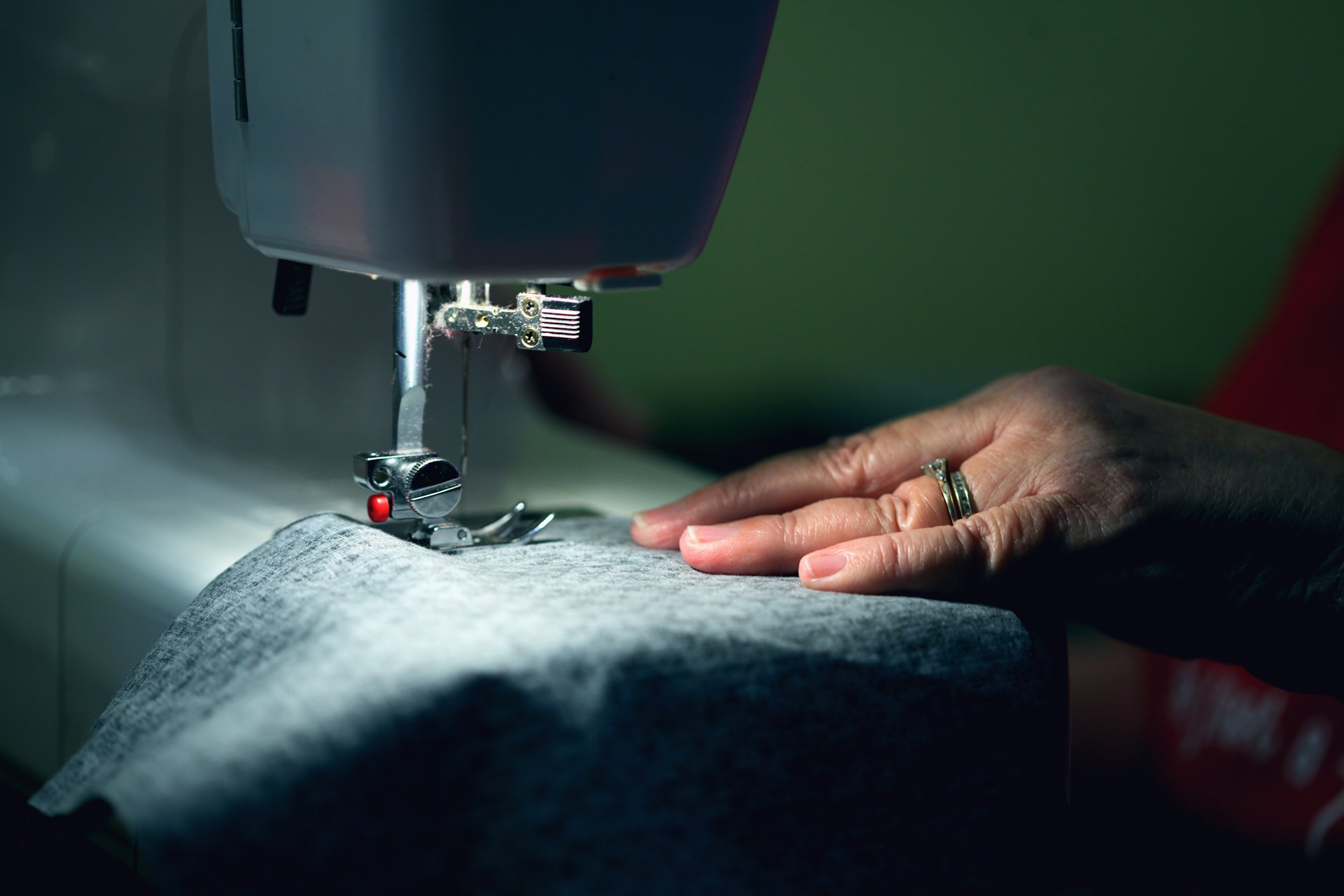Horse Star in Javanese Primbon: Its Meaning and Influence in Life
Learn the deep meaning of Horse Star in Javanese primbon and its influence on a person's character and destiny. Check out the complete explanation here!


Sewing by hand (credit: unsplash)
In Javanese primbon, sewing at night is considered one of the taboos or prohibitions that should be avoided. Primbon itself is a book that contains predictions and various guidelines about daily life according to the beliefs of the Javanese people. The myth of sewing at night falls into the category of prohibitions known as "ora ilok" in Javanese.
According to this belief, sewing at night can bring various negative impacts for the practitioner. Some of the consequences believed to occur include:
However, it is important to remember that this belief is part of the local wisdom of the Javanese community and does not have a strong scientific basis. Understanding this myth should be approached wisely, considering the cultural context and the progress of time.
The myth of sewing at night has deep historical roots in Javanese tradition. This belief has existed since ancient times and has been passed down orally from generation to generation. Some theories about the origins of this myth include:
1. Limitations of lighting in the past
In ancient times, lighting at night was very limited. Sewing requires precision and good lighting. Sewing in dim conditions can pose safety risks, such as being pricked by a needle. This prohibition then evolved into a myth.
2. Conservation of resources
Traditional societies were very frugal in their use of kerosene or candles for lighting. Sewing at night was considered wasteful, thus it was prohibited.
3. Animistic beliefs
Ancient Javanese people believed in the presence of spirits and supernatural beings that were active at night. Sewing was thought to disturb or attract these beings.
4. Protection of women
Sewing is associated with women's work. This prohibition may aim to protect women from overworking late into the night.
5. Symbolism of needles and thread
In mystical beliefs, needles and thread are thought to have magical powers that can attract negative energy if used at the wrong time.
Although its origins cannot be confirmed, this myth has become part of the local wisdom of the Javanese people, which is still held firmly to this day. Understanding its history can help us approach this myth more wisely.

Sewing by hand (credit: unsplash)
Although the myth of sewing at night is still believed by some in society, scientific explanations can provide a more rational perspective on this phenomenon:
1. Lighting Factors
Scientifically, sewing requires good lighting for precision and safety. Sewing in dim conditions can cause eye strain and increase the risk of injury. However, with the advancement of modern lighting technology, this reason has become less relevant.
2. Circadian Rhythm
The human body has a biological clock or circadian rhythm that regulates the sleep-wake cycle. Working late into the night, including sewing, can disrupt this rhythm and impact health. However, this applies to all types of activities, not just sewing.
3. Psychological Factors
Belief in the myth can create a nocebo effect, where a person experiences negative impacts due to negative expectations. If someone believes that sewing at night brings bad luck, they may experience anxiety or stress that is actually caused by their own belief.
4. Noise
The sound of a sewing machine at night may be considered disruptive to peace. However, this is more related to neighborly ethics than to any mystical impact.
5. Productivity
Some people may feel more productive working at night due to a quieter atmosphere. However, this is highly individual, and there is no scientific evidence that sewing at night inherently brings negative effects.
By understanding these scientific explanations, we can approach the myth of sewing at night more rationally while still respecting the existing local wisdom.
The myth of sewing at night is often associated with religious beliefs. However, what is the actual view of religion on this matter?
1.Islam
In Islamic teachings, there is no specific prohibition against sewing at night. Islam teaches to work and strive to earn a living without any specific time restrictions. Some scholars even assert that such myths are considered superstitions that have no basis in religious law.
Buya Yahya, a prominent scholar, stated that sewing at night is permissible in Islam. He explained, "The answer is you can also dig at night. If there is any prohibition, it is not due to religious law but rather because of danger."
2. Christian
In Christian teachings, there is no specific prohibition against sewing at night. The Bible teaches the importance of hard work and using time wisely, without limiting working hours.
3.Hindu
In Hinduism, although there are some taboos related to time, there is no specific prohibition against sewing at night. Hindu teachings emphasize performing work with good intentions and without harming others.
4.Buddha
Buddhist teachings do not prohibit certain activities based on time. Buddhism teaches about mindfulness in every action, including in work, without restricting specific times.
In general, major religions do not have specific prohibitions against sewing at night. This myth is more a part of local beliefs that have developed within society. The most important thing is to do the work with good intentions, without harming oneself or others, and to maintain a balance between work and rest.

Sewing with a sewing machine (credit: unsplash)
Believing in the myth that sewing at night can have various psychological impacts on individuals and society. Some of these impacts include:
1. Anxiety and fear
Belief in this myth can create feelings of anxiety or fear if someone is forced to sew at night. This can disrupt concentration and the quality of work.
2. Self-restriction
People who believe in this myth may restrict themselves from engaging in sewing activities at night, even when it is necessary or beneficial.
3. Guilt
If someone is forced to break this taboo, they may feel guilty or worried about experiencing negative consequences.
4. Internal conflict
For individuals living in the modern era but still holding traditional beliefs, there may be an internal conflict between rationality and belief.
5. Influence on productivity
This belief can affect productivity, especially for those working in the garment industry or who have a hobby of sewing.
6. Stereotypes and stigma
People who do not believe in this myth may be considered disrespectful of tradition, while those who believe in it may be seen as old-fashioned or irrational.
7. Nocebo effect
A strong belief in the negative impacts of sewing at night can create a nocebo effect, where someone actually experiences negative consequences because of their own expectations.
8. Intergenerational transmission of anxiety
Parents who believe in this myth may pass on unnecessary anxiety or fear to their children.
Understanding these psychological impacts is important for addressing myths more wisely. We need to respect traditional beliefs while still thinking critically and rationally in facing the various myths present in society.
Facing the myth of sewing at night should be done wisely, respecting tradition but still thinking critically. Here are some ways to respond to this myth:
1. Understand the cultural context
Learn the background and history behind this myth. A deeper understanding can help us appreciate local wisdom without having to fully believe it.
2. Think critically
Weigh the pros and cons of believing this myth. Are there benefits or is it actually harmful? Use logic and scientific knowledge in your assessment.
3. Seek information from various sources
Do not rely on just one source of information. Compare various opinions, including those from religious leaders, scientists, and cultural figures.
4. Respect others' beliefs
Even if we may not believe in this myth, respect those who still do. Avoid mocking or belittling others' beliefs.
5. Adapt as needed
If living in an environment that still firmly holds this belief, consider adapting for social harmony, as long as it does not harm yourself.
6. Educate gently
If you want to educate others about this myth, do so gently and with understanding. Avoid imposing our views.
7. Focus on the essence
Look for positive values behind this myth, such as the importance of resting at night or being cautious in work.
8.Use it as a learning opportunity
Make this myth a learning material about cultural diversity and the evolution of societal beliefs.
9.Apply safety principles
If you must sew at night, ensure that the lighting and health conditions are adequate to avoid the risk of injury.
10.Self-reflection
Reflect on why we believe or do not believe this myth. Are there biases or personal experiences that influence it?
By addressing the myth of sewing at night wisely, we can bridge the gap between respecting tradition and modern critical thinking. This is important for preserving local wisdom while still adapting to the times.

Sewing with a sewing machine (credit: unsplash)
For those who are still hesitant or want to avoid sewing at night, here are some alternative productive activities that can be done:
1.Reading books
Utilize the nighttime to expand your horizons by reading beneficial books.
2.Writing a journal
Write down your experiences, feelings, or creative ideas in a journal.
3.Meditation or yoga
Engage in light meditation or yoga to calm the mind and improve sleep quality.
4.Learning new skills
Use your free time at night to learn new skills through online courses or tutorials on the internet.
5.Light exercise
Do stretching or light exercise to maintain physical fitness.
6.Listening to podcasts or audiobooks
Listen to educational podcasts or audiobooks while doing light activities.
7. Preparing for tomorrow's needs
Use the night to prepare for tomorrow's needs, such as getting clothes ready or organizing your schedule.
8. Communicating with family
Take advantage of the night to chat and strengthen relationships with family.
9. Planning finances
Draft a financial plan or evaluate your monthly expenses.
10. Engaging in creative hobbies
Engage in other creative hobbies such as painting, knitting, or making crafts that do not require sharp tools.
By engaging in these various alternative activities, you can still be productive at night without violating the belief about sewing at night. Choose activities that suit your interests and needs.
Although the myth of sewing at night is generally known in Javanese society, similar beliefs can also be found in various regions in Indonesia with different variations and interpretations. Here are some examples of the differences in this myth across different regions:
1. Java
In Java, sewing at night is believed to invite spirits and bring bad luck. Some versions state that this activity can shorten one's lifespan.
2. Sundanese
The Sundanese people have a similar belief, but with an emphasis on the prohibition of sewing at sunset, as it is considered a time of day transition.
3. Sumatra
In some areas of Sumatra, sewing at night is thought to hinder matchmaking, especially for unmarried women.
4. Kalimantan
Some tribes in Kalimantan believe that sewing at night can attract forest-dwelling spirits.
5. Sulawesi
In Sulawesi, especially among the Bugis-Makassar tribes, sewing at night is considered to bring nightmares.
6.Bali
The Balinese people believe that sewing at night, especially on certain days, can disturb spiritual balance.
7.Madura
In Madura, sewing at night is believed to cause difficulties in seeking sustenance.
8.Betawi
The Betawi people believe that sewing at night can invite the 'guardians' of the house and disturb peace.
9.Minangkabau
Among the Minangkabau community, sewing at night is considered to hinder sustenance and slow down the completion of work.
10.Papua
Some tribes in Papua believe that sewing at night can invite ancestral spirits.
Although there are variations, generally these myths share similarities in terms of prohibitions or taboos against sewing activities at night. The differences in interpretation and the believed consequences reflect the cultural diversity and local wisdom in Indonesia.

Sewing with a sewing machine (credit: unsplash)
As time progresses and modernization occurs, the public's view of the myth of sewing at night has also changed. Some influences of modernization on this myth include:
1. Shift in beliefs
With the increase in education levels and access to information, many people have begun to critically question the validity of this myth.
2. Technology adaptation
The development of modern lighting technology has made the practical reasons behind the ban on sewing at night less relevant.
3. Changes in work patterns
Shift work systems and economic demands have forced many people to work at night, including in the garment industry.
4. Cultural globalization
Exposure to global culture has made people more open to different perspectives and less tied to traditional beliefs.
5. Reinterpretation
Some people try to reinterpret this myth in a modern context, for example, as an encouragement to rest at night.
6. Documentation and preservation
On the other hand, there are efforts to document and preserve this myth as part of cultural heritage.
7. Scientific approach
Anthropological and sociological studies of this myth provide new insights into its social and cultural functions.
8. Generational conflict
There are often differences of opinion between the older generation, who still firmly hold this belief, and the younger generation, who are more skeptical.
9. Industrial adaptation
The garment and fashion industry must adapt while respecting local beliefs and meeting the demands of modern production.
10. Revitalization of tradition
In reaction to modernization, there is also a movement to revive traditional values, including beliefs like this one.
Modernization has brought significant changes in how society views the myth of sewing at night. Nevertheless, this myth remains an important part of local wisdom that needs to be understood in its cultural and historical context.
Although it has often been heard, there are still many interesting facts surrounding the myth of sewing at night that may not be widely known. Here are some of them:
1. Variations in the time of prohibition
In some regions, the prohibition on sewing does not only apply at night, but also at certain times such as during sunset or midday.
2. Exceptions for emergencies
Although there is a prohibition, some versions of this myth allow sewing at night in emergency situations, such as repairing clothing for an important event the next day.
3. Cleaning rituals
Some communities have special rituals to 'clean' sewing tools that have been used at night, usually involving specific prayers or offerings.
4. Influence on house design
In some areas, this belief influences the design of traditional houses, where sewing spaces are deliberately placed in bright and open areas.
5. Modern adaptations
Some professional tailors adapt this myth in unique ways, for example by installing clocks in their workspaces that always show daytime even when working at night.
6. The influence on the fashion industry
Some local fashion designers use this myth as inspiration in their works, creating collections inspired by the philosophy behind the prohibition of sewing at night.
7.Gender variation
In some areas, this prohibition only applies to women, while men are allowed to sew at any time.
8.Relationship with other myths
The myth of sewing at night is often related to other myths, such as the prohibition of sweeping or cutting nails at night.
9.Influence on education
Some vocational schools for fashion in certain areas still consider this myth when scheduling students' sewing practice.
10.Cross-cultural adaptation
Interestingly, similar myths are also found in several other countries with local variations, indicating a common mindset across different cultures.
These interesting facts show that the myth of sewing at night is not just a simple prohibition, but has complex cultural, social, and even economic dimensions within society.

Sewing with a sewing machine (credit: unsplash)
The myth of sewing at night according to Javanese primbon is one of the cultural legacies still believed by some people in Indonesia. Although it lacks a strong scientific basis, this belief has become part of the local wisdom passed down from generation to generation.
In facing this myth, it is important to approach it wisely. We need to respect existing traditions and beliefs, while also thinking critically and rationally. Understanding the cultural context, history, and values behind this myth can help us approach it more wisely.
Modernization and the changing times have brought changes in how society views this myth. However, regardless of whether we believe it or not, the myth of sewing at night remains an important part of Indonesia's cultural wealth that deserves to be preserved and studied.
Ultimately, the decision to believe or not believe in this myth is up to each individual. What is most important is how we can take positive values from this local wisdom, such as the importance of getting enough rest, being cautious in work, and respecting the rhythms of nature, while still adapting to the demands of modern life.
With deep understanding and a wise attitude, we can bridge the gap between tradition and modernity, preserving cultural heritage while continuing to evolve with the times.
Find other interesting reviews at kapanlagi.com. If not now, when?
(kpl/psp)
Cobain For You Page (FYP) Yang kamu suka ada di sini,
lihat isinya
Learn the deep meaning of Horse Star in Javanese primbon and its influence on a person's character and destiny. Check out the complete explanation here!
Causes of cold feet according to Javanese primbon and medical explanation. Check out the meaning, how to cope, and when to see a doctor.
What are those anime? Here is a list of the best anime with overpowered characters that must be on your watchlist according to Kapanlagi. Let's check it out, KLovers!
Learn the meaning of left lower eye twitch according to Javanese primbon. Discover scientific explanations and myths surrounding this phenomenon. Read more here!
Learn the meaning of dreams about leaky houses according to Javanese primbon. Find the complete interpretation and meaning from various aspects of life in this article.
If you love medical fantasy anime, here is the synopsis of THE BRILLIANT HEALER'S NEW LIFE IN THE SHADOWS 2025 that is a must-watch. Let's check it out, KLovers!
Explore the deep meaning behind dreams of losing shoes according to Javanese primbon. Discover interpretations, symbolism, and its impact on your life.
Learn the deep meaning behind dreaming of wearing a gold necklace according to Primbon. Discover the interpretations, symbolism, and spiritual messages of this dream experience.
Here are six recommendations for ongoing Korean drama titles in April 2025 that are currently airing and capturing the attention of K-Drama fans.
Interested in doing a casual studio hijab prewedding photo shoot? If so, check out these 7 inspirations for simple yet coordinated and harmonious casual studio hijab prewedding styles.
Check the status of recipients and PIP fund disbursement for 2025 easily and quickly at the official site pip.kemendikdasmen.go.id!
Here are six recommendations for Chinese dramas about hidden pregnancies with exciting stories and high ratings. Get ready to be moved and swept away by the secret love stories within.